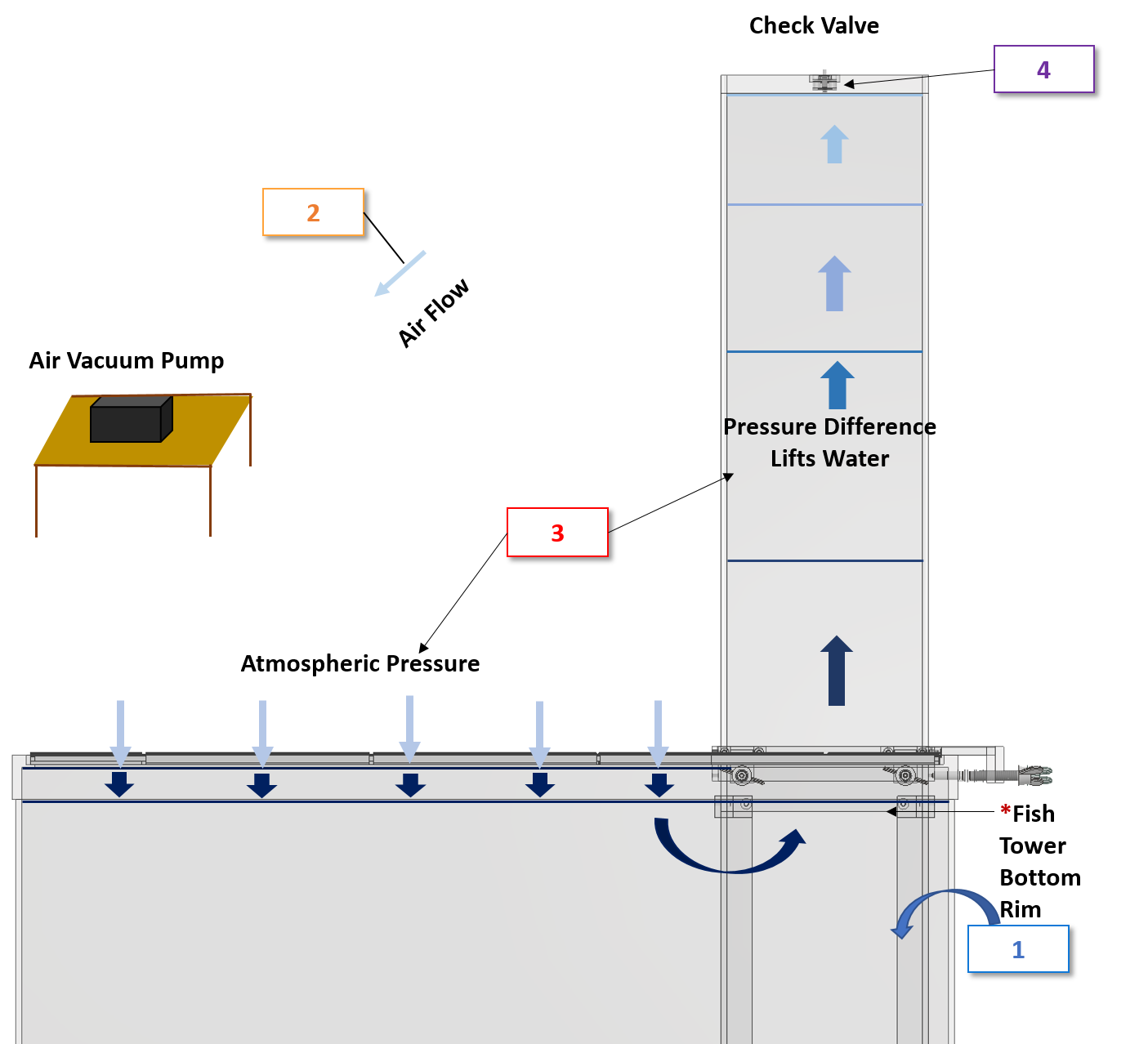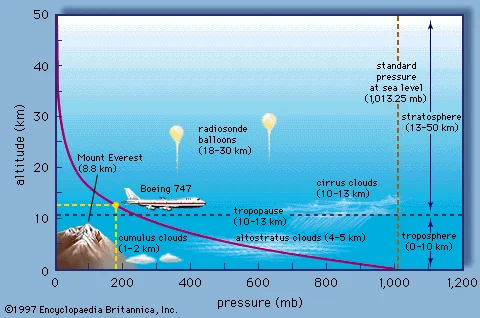How the Fish Tower Works
Home > How the Fish Tower Works
The Fish Tower works thanks to the vacuum pump and check valve (and fluid mechanics*). With the pump reducing the pressure inside the tower, water will be forced to flood the Tower and the check valve holds it in place.
The process works as follows:
1. The empty Fish Tower is placed in the aquarium. The air in the Fish Tower and the aquarium water surface have the same initial atmospheric air pressure.
2. Next, the Air Vacuum Pump is connected and draws air out creating a lower air pressure in the Tower.
3. The pressure difference and the working principles of Pascal’s Law causes the atmospheric pressure at the aquarium surface to push the aquarium water into the Fish Tower.
4. Once the Fish Tower is filled, the one-way check valve prevents air from coming back in so the lower air pressure at the top of the Fish Tower is stable*. The Release Port is used to remove water when needed.

How the Fish Tower Works
The Fish Tower works thanks to the vacuum pump and check valve (and fluid mechanics*). With the pump reducing the pressure inside the tower, water will be forced to flood the Tower and the check valve holds it in place.
The process works as follows:
1. The empty Fish Tower is placed in the aquarium. The air in the Fish Tower and the aquarium water surface have the same initial atmospheric air pressure.
2. Next, the Air Vacuum Pump is connected and draws air out creating a lower air pressure in the Tower.
3. The pressure difference and the working principles of Pascal’s Law causes the atmospheric pressure at the aquarium surface to push the aquarium water into the Fish Tower.
4. Once the Fish Tower is filled, the one-way check valve prevents air from coming back in so the lower air pressure at the top of the Fish Tower is stable*. The Release Port is used to remove water when needed.
Pascal’s principle
Pascal’s principle, also called Pascal’s law, in fluid (gas or liquid) mechanics, statement that, in a fluid at rest in a closed container, a pressure change in one part is transmitted without loss to every portion of the fluid and to the walls of the container. The principle was first enunciated by the French scientist Blaise Pascal.
Pressure is equal to the force divided by the area on which it acts. According to Pascal’s principle, in a hydraulic system a pressure exerted on a piston produces an equal increase in pressure on another piston in the system. If the second piston has an area 10 times that of the first, the force on the second piston is 10 times greater, though the pressure is the same as that on the first piston. This effect is exemplified by the hydraulic press, based on Pascal’s principle, which is used in such applications as hydraulic brakes.
Pascal also discovered that the pressure at a point in a fluid at rest is the same in all directions; the pressure would be the same on all planes passing through a specific point. This fact is also known as Pascal’s principle, or Pascal’s law.
Pascal’s principle
Pascal’s principle, also called Pascal’s law, in fluid (gas or liquid) mechanics, statement that, in a fluid at rest in a closed container, a pressure change in one part is transmitted without loss to every portion of the fluid and to the walls of the container. The principle was first enunciated by the French scientist Blaise Pascal.
Pressure is equal to the force divided by the area on which it acts. According to Pascal’s principle, in a hydraulic system a pressure exerted on a piston produces an equal increase in pressure on another piston in the system. If the second piston has an area 10 times that of the first, the force on the second piston is 10 times greater, though the pressure is the same as that on the first piston. This effect is exemplified by the hydraulic press, based on Pascal’s principle, which is used in such applications as hydraulic brakes.
Pascal also discovered that the pressure at a point in a fluid at rest is the same in all directions; the pressure would be the same on all planes passing through a specific point. This fact is also known as Pascal’s principle, or Pascal’s law.
Atmospheric pressure
Atmospheric pressure, also called barometric pressure, force per unit area exerted by an atmospheric column (that is, the entire body of air above the specified area). Atmospheric pressure can be measured with a mercury barometer (hence the commonly used synonym barometric pressure), which indicates the height of a column of mercury that exactly balances the weight of the column of atmosphere over the barometer.
Subscribe to our Newsletter
Stay updated with new products lanuch and features.


